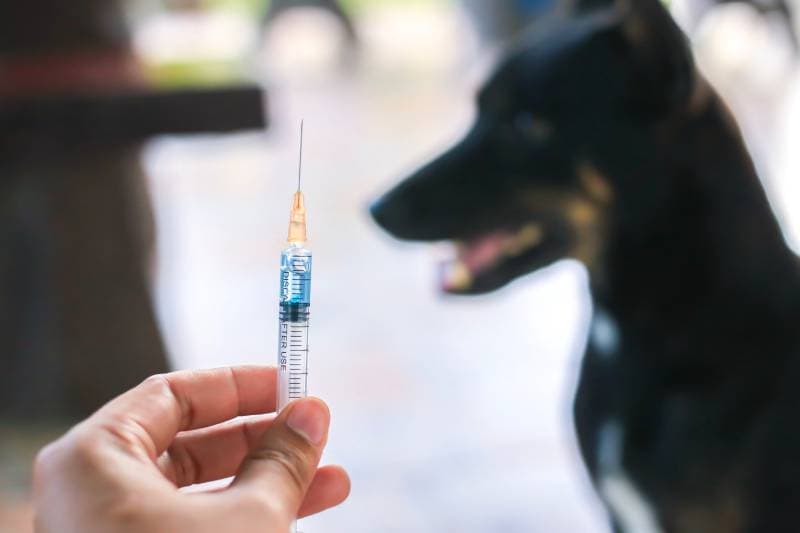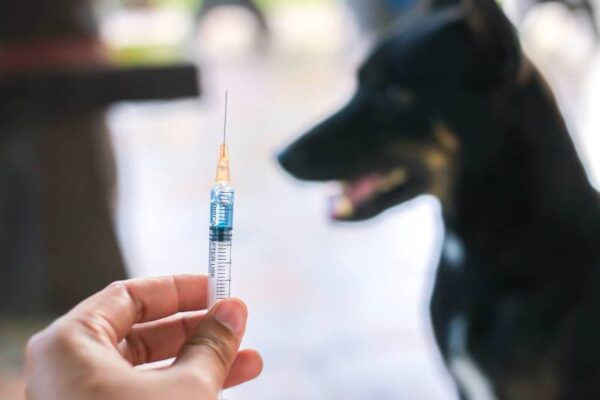Rabies is one of the oldest diseases, dating back more than 4,000 years. Humans have understood the dangers of rabies for millennia with Aristotle even mentioning that rabid dog bites would affect any animal bitten. The viral disease is zoonotic, which means it passes between species-from animals to humans and vice versa.
Once symptoms/signs show, it is fatal in virtually every case, in dogs, humans, and other mammals. And in virtually all cases of rabies in humans, domestic dogs were the cause of the fatal bite, making vaccination essential.1
It is considered safe for dogs to have two rabies vaccinations in a year, and this can happen if your dog has had their regular vaccination but requires another to travel to certain countries or jurisdictions or if vaccination status is unknown and an additional rabies vaccine is given unintentionally.
About Rabies
Rabies is a viral infection that has been around for more than 4,000 years.2 It directly affects the central nervous system of infected animals, ultimately leading to death. It is incredibly dangerous and is found in more than 120 countries around the world, although some countries have been declared rabies-free, largely thanks to extensive and ongoing vaccination programs.
This is a zoonotic disease that can be passed from animals to humans, and while it is more commonly found in wild species like bats, foxes, and wolves, humans are more likely to be infected by a bite from a domestic dog.
As well as being passed on by bites, this infectious disease can be transmitted by contact with infected saliva. Rabies is nearly 100% fatal once a human or animal begins to show signs, but it can be survivable if a bitten person receives treatment soon after being bitten.
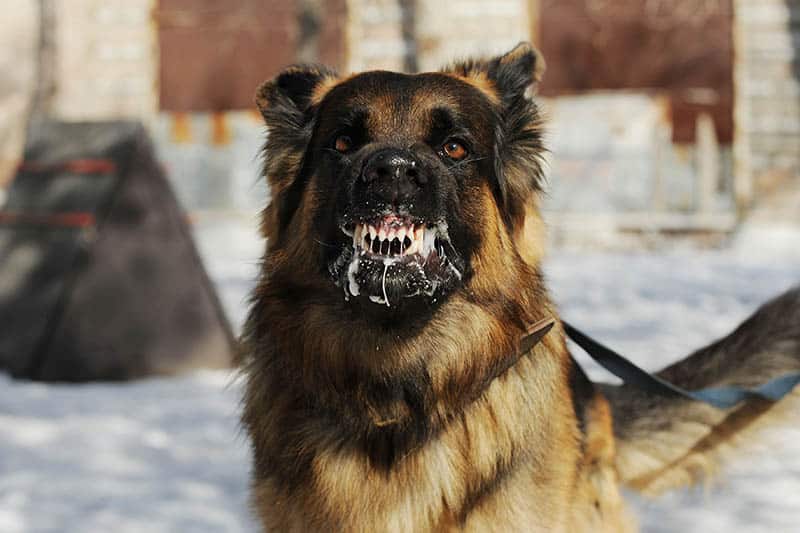
Current Rabies Threat
A vaccination program has helped curb the spread of rabies in most regions of the world. Some countries, including Australia, New Zealand, and the UK are designated completely rabies-free. EU countries do not have a rabies-free classification, but they do have rabies-controlled countries. Be aware that if you are traveling from a rabies-controlled area into a rabies-free area, the requirements can be more stringent.
The U.S. has undergone an extensive rabies vaccination program that has controlled the spread and threat of the disease. Even so, between 60 and 70 domestic dogs are reported as rabid every year, along with around 250 cats.3 An average of two cases of human rabies are reported annually.4
However, globally, it is a very different picture. 59,000 rabies deaths are reported in humans every year, and 99% of these cases were caused by domestic dog bites, highlighting the importance of rabies vaccinations.5
Rabies Vaccinations
The current rabies vaccines are inactivated, which means they use a rabies virus that has been killed. This essentially teaches the body to fight the vaccine without infecting it. To be effective, inactive vaccines need to be administered regularly so the body can continue to produce immune cells against it. This is why dogs have to have regular booster vaccines to ensure they stay protected.

Is It Safe to Have Two Rabies Vaccinations in a Year?
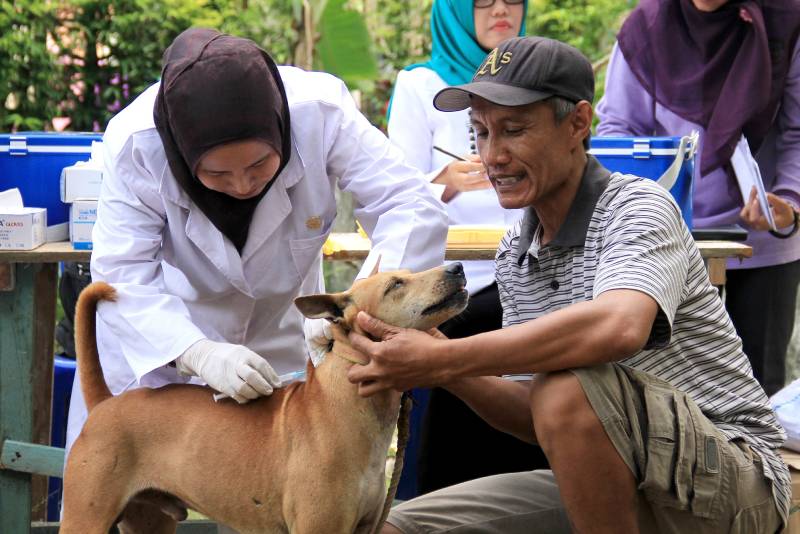
When traveling, it may be necessary to meet local rabies vaccination requirements before your dog is allowed into the area. Typically, this means that the dog must have received their vaccine within a month of traveling. If your dog has already had their booster a few months ago, this can lead to a situation where your dog needs two vaccines in a year.
This is generally considered safe, although there are always risks of adverse reactions with any vaccine. Rabies laws are strict, however, so the alternative is that your dog doesn’t travel into that region.
Other cases where a dog may be vaccinated for rabies twice in one year is when the vaccine status is unknown. Maybe your dog was a stray or came from a shelter and didn’t come with a vaccination history. These dogs may be revaccinated for rabies, even if they unknowingly received the vaccine earlier in the year. This is just to make sure a dog is covered and to give their new owners a vaccination starting point.
How Often Should Your Dog Get a Rabies Vaccination?
Dogs can have their first vaccine at 12 weeks of age or older. They should receive a booster shot one year later and then need boosters every 1-3 years. It is worth noting that different states and countries have different rules and recommendations, typically depending on the vaccine that is used in that area, so you will need to check with your vet to ensure that you keep up to date with shots.
Is a Rabies Vaccine a Legal Requirement for Dog Owners?
For a dog to enter the U.S. from abroad, it will have to have been vaccinated and received a certificate that meets CDC requirements.
Domestically, while most states have laws and statutes that demand a dog be given regular rabies vaccinations, this isn’t true of all states. Kansas, for example, has no vaccination laws so you will need to check local municipality laws to determine legal requirements. Even if there is no legal requirement to have rabies vaccines, you should still consider protecting your dog and yourself from this potentially fatal infection.
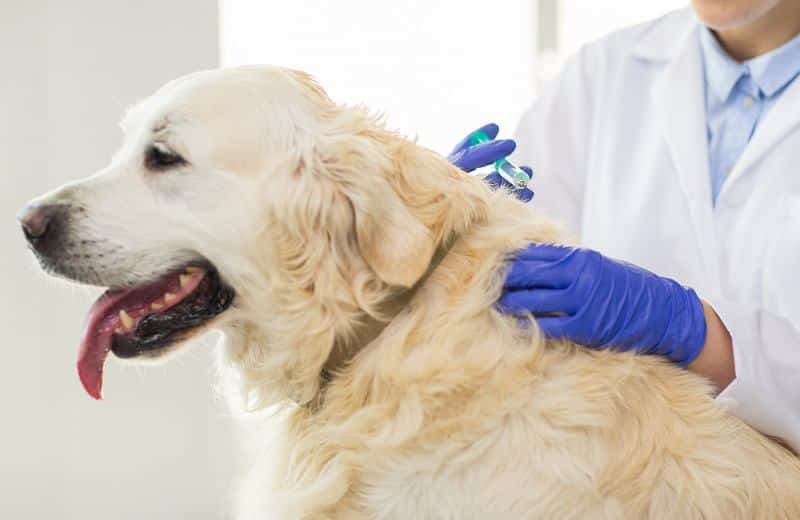
What are the Symptoms of Rabies?
It can be very difficult to tell if an animal has rabies without laboratory testing until the signs are obvious, which is often too late. A rabid animal might start acting strangely. Aggressive behavior is common in infected animals, and the disease can cause foaming at the mouth. If you are in any doubt, report it immediately to the authorities. If it’s a wild animal, leave the area. If it’s your pet, remove yourself from the room and contact a vet and the authorities.
Unfortunately, once clinical signs of rabies show in humans, it is generally too late to receive treatment. Early signs are similar to those of any virus and include headaches, cold symptoms, aching, and lethargy. This will progress to feelings of anxiety, confusion, and anger. Eventually, the patient may suffer from insomnia, fear of water, and hallucinations. There have been fewer than 20 cases of untreated humans surviving rabies.
If a patient knows they have been bitten by a rabid animal and acts quickly, the prognosis is very positive. The patient is given a dose of human rabies immune globulin immediately on the day they were bitten. They are then given doses of a vaccine on days 3, 7, and 14.
How Do Dogs Catch Rabies?
Rabies can infect any mammal, meaning that it can transmit between humans, domestic animals and wildlife. Rabid domestic dogs may be bitten by another infected domestic dog or cat, or they may have been infected by a rabid wild animal.

Is There Any Treatment for Animals with Rabies?
There is no known treatment once the rabies virus has developed, and it almost always proves fatal. The most humane course of action is generally considered to be euthanasia to keep the virus from spreading.
Is There Any Treatment for Rabies in Humans?
There is no treatment for rabies in humans once the virus takes hold. However, medical intervention can prevent the infection from taking hold via an initial injection of rabies immunoglobulin and three vaccine injections provided over the following days.
Conclusion
Rabies is one of the oldest known diseases, and it has long been recognized that it can be passed between animal species. It is nearly always fatal to any species that contracts it and is most often passed by bite from one rabid animal to another.
The disease has been eliminated in some countries, and controlled in others, thanks to effective vaccination programs, so your dog should have regular boosters to ensure it remains safe. If you are traveling or your dog needs to have two vaccines in a year, this is generally considered safe, although you should talk to your vet before proceeding.
Featured Image Credit: Numstocker, Shutterstock
Contents
- About Rabies
- Current Rabies Threat
- Rabies Vaccinations
- Is It Safe to Have Two Rabies Vaccinations in a Year?
- How Often Should Your Dog Get a Rabies Vaccination?
- Is a Rabies Vaccine a Legal Requirement for Dog Owners?
- What are the Symptoms of Rabies?
- How Do Dogs Catch Rabies?
- Is There Any Treatment for Animals with Rabies?
- Is There Any Treatment for Rabies in Humans?
- Conclusion

